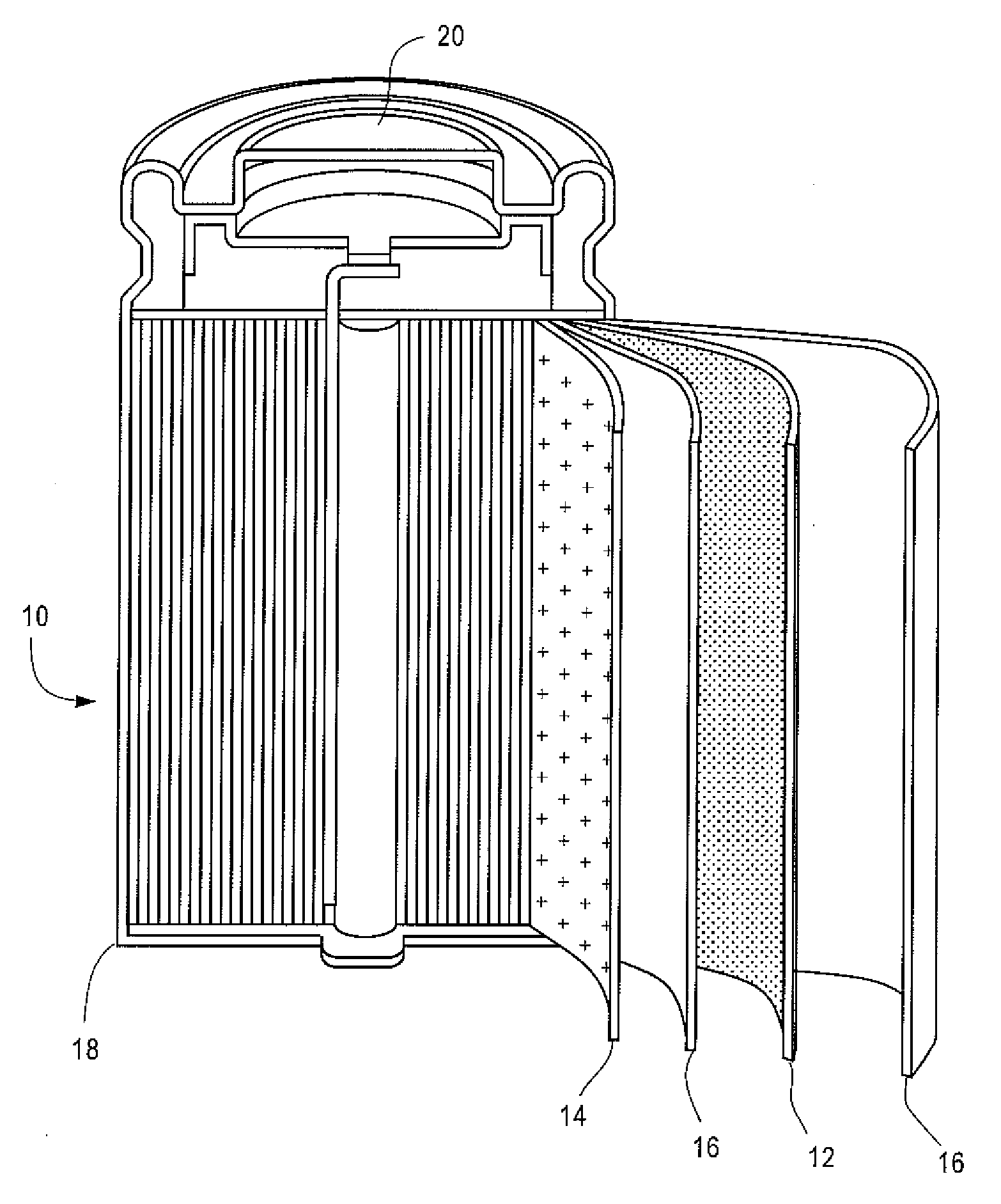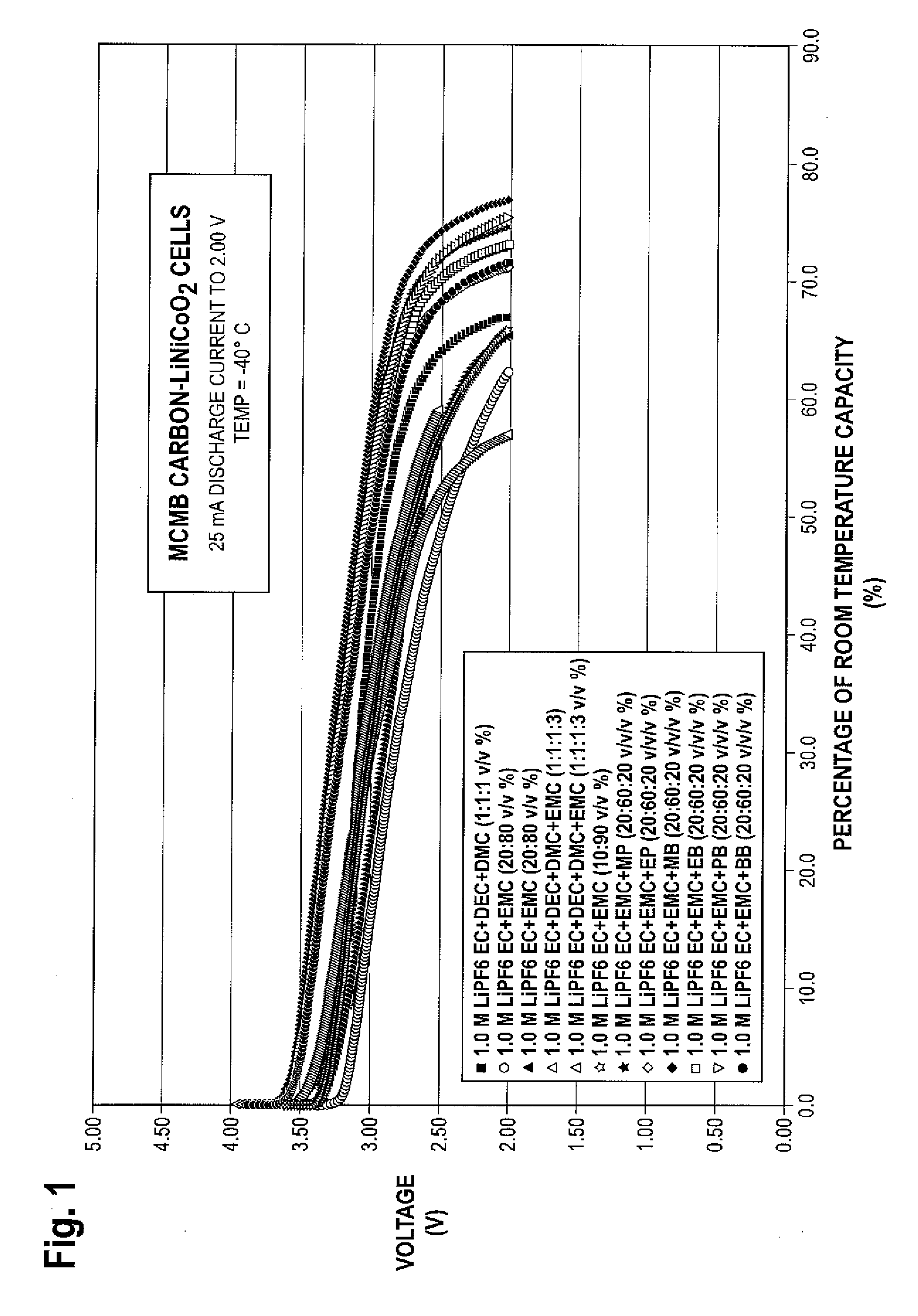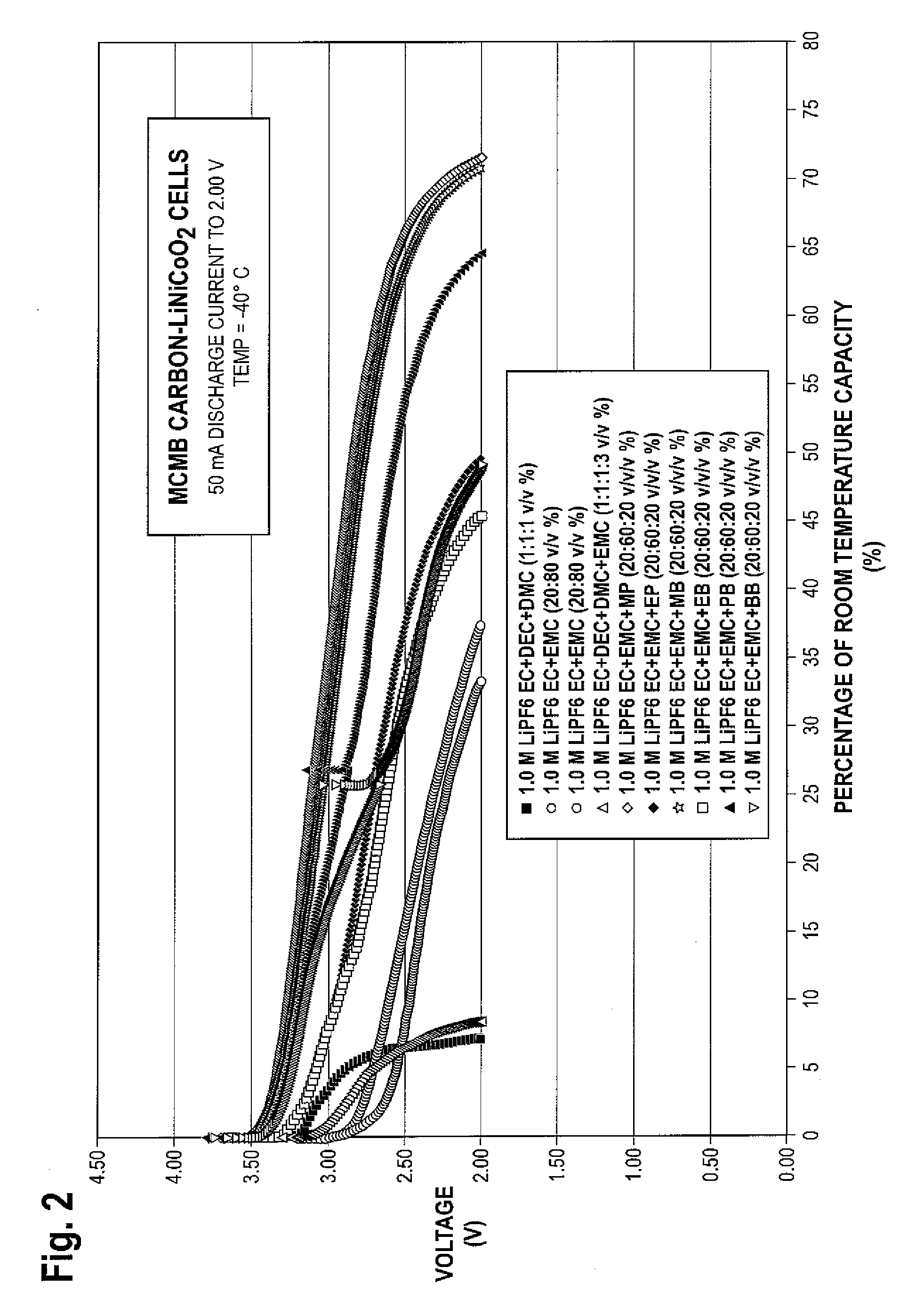Lithium ion electrolytes and lithium ion cells with good low temperature performance
a lithium ion cell and electrolyte technology, applied in the field of electrochemical cells and organic solvents of lithium ion cells, can solve the problems of limited performance of lithium ion rechargeable batteries and systems, unsuitable for many terrestrial and extra-terrestrial applications, and state-of-the-art lithium ion cells typically exhibit limited capacities, etc., to achieve improved discharge performance and rate capability, improved low temperature performance, and aggressive rate
- Summary
- Abstract
- Description
- Claims
- Application Information
AI Technical Summary
Benefits of technology
Problems solved by technology
Method used
Image
Examples
Embodiment Construction
[0063]Disclosed embodiments will now be described more fully hereinafter with reference to the accompanying drawings, in which some, but not all disclosed embodiments are shown. Indeed, several different embodiments may be provided and should not be construed as limited to the embodiments set forth herein. Rather, these embodiments are provided so that this disclosure will be thorough and complete and will fully convey the scope of the disclosure to those skilled in the art.
[0064]In one embodiment of the invention there is provided an electrolyte for use in a lithium ion electrochemical cell. The electrochemical cell preferably operates in a temperature range of from about −60 degrees C. (Celsius) to about 60 degrees C. (Celsius). The electrolyte comprises a mixture of an ethylene carbonate (EC). The electrolyte may comprise from about 15% to about 40% by volume ethylene carbonate. Preferably, the electrolyte comprises 20% by volume ethylene carbonate. The electrolyte further compri...
PUM
 Login to View More
Login to View More Abstract
Description
Claims
Application Information
 Login to View More
Login to View More - R&D
- Intellectual Property
- Life Sciences
- Materials
- Tech Scout
- Unparalleled Data Quality
- Higher Quality Content
- 60% Fewer Hallucinations
Browse by: Latest US Patents, China's latest patents, Technical Efficacy Thesaurus, Application Domain, Technology Topic, Popular Technical Reports.
© 2025 PatSnap. All rights reserved.Legal|Privacy policy|Modern Slavery Act Transparency Statement|Sitemap|About US| Contact US: help@patsnap.com



